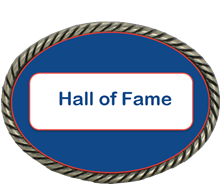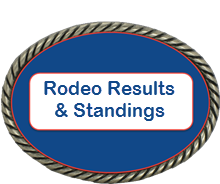Team Roping
(Heading) If a team roping header isn't quick with a rope, you won't find him at the Senior National Finals Rodeo. Headers must run on instinct and cat quick reflexes. To win money at most Senior Pro rodeos, team roping headers must leave the box and rope their steer in less time than it takes to open a bag of pretzels.
First, the header must race out of the box on horseback (without breaking the barrier), chase down a fast-running steer and rope him around his protected horns, neck or "half-head" (a partial horn-neck catch). Then the header must turn the steer to the left, giving his partner, called a heeler, a chance to slip his rope around the steer's hind feet.
The run is completed when the steer is secured and both team ropers' horses are facing each other on opposite sides of the steer. Team roping is, as the name implies, rodeo's only true team event.
(Heeling) - In rodeo's only true team event, two ropers, a "header" and a "heeler," work together to catch a steer. The header is the first cowboy out of the box. He may rope the steer around the head and one horn, around the neck or around both horns, which are specially wrapped for the event.
As with all timed events, if the header fails to give the steer a head start, a 10-second penalty is added to the total time.
After making his catch, the header rides to the left, taking the steer behind him. The heeler then moves in and ropes both hind legs. The heeler must have a great sense of timing. His job is to throw his big loop out in front of the steer's hind legs. Then, when the steer runs through the loop, the heeler must quickly pull the slack out of his rope to make the catch on the hind legs.
Catching only one hind leg results in a five-second penalty. If the heeler tosses his loop before the header has changed the direction of the steer and has the animal moving forward, it's called a "crossfire" and it results in disqualification.
The clock is stopped when the slack has been taken out of both ropes and the contestants are facing each other.









